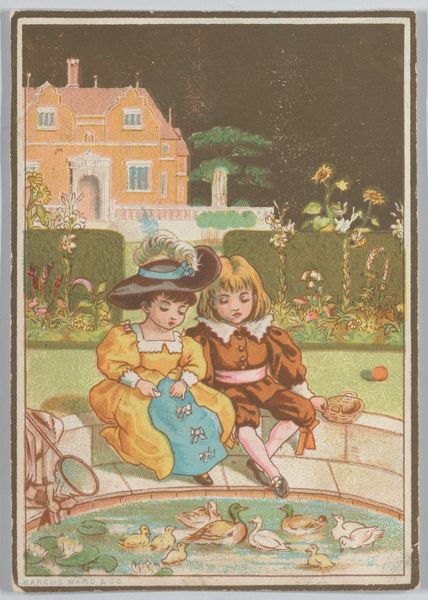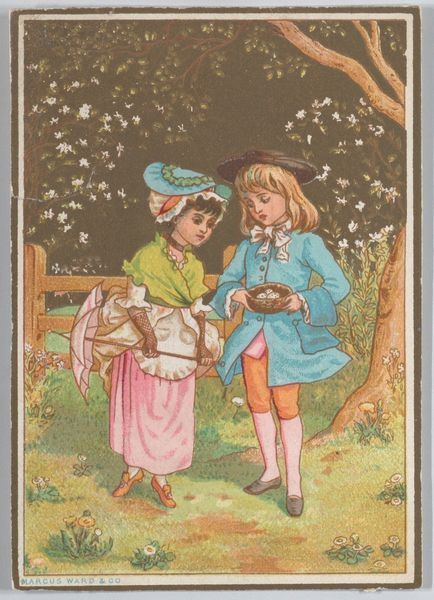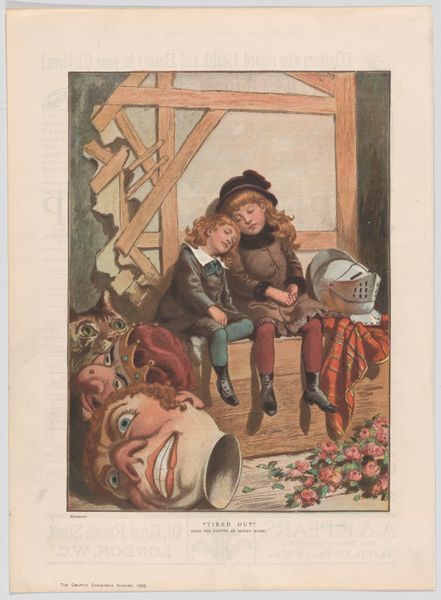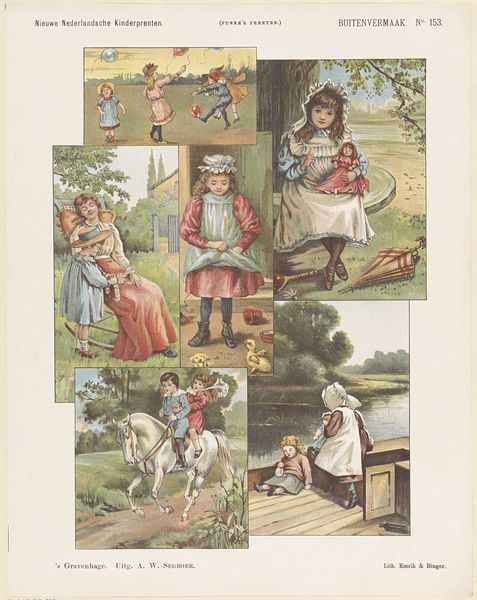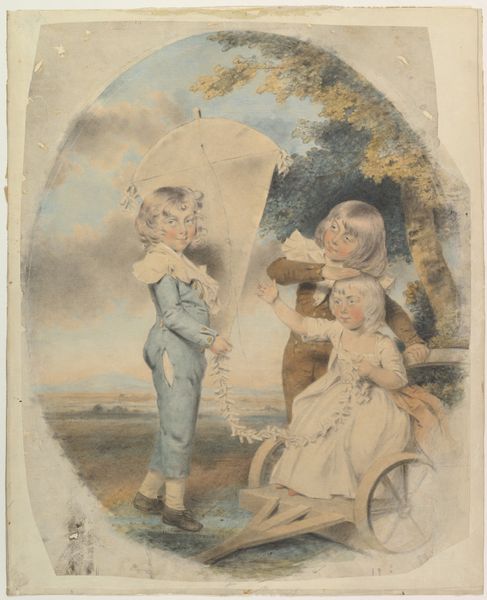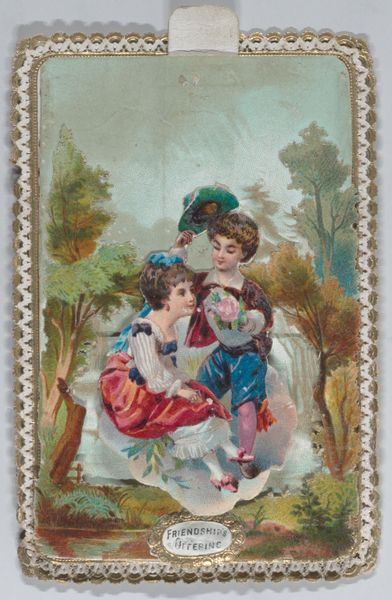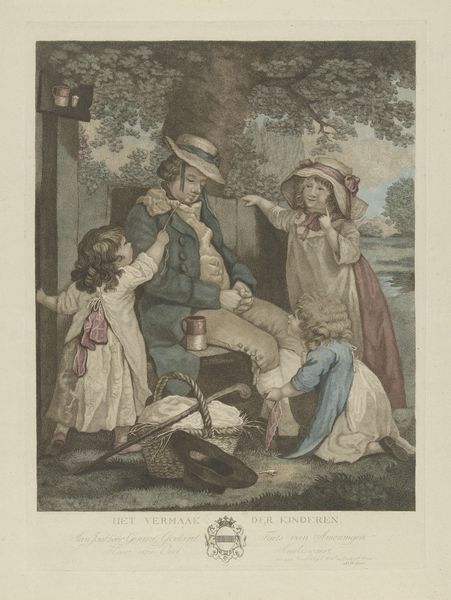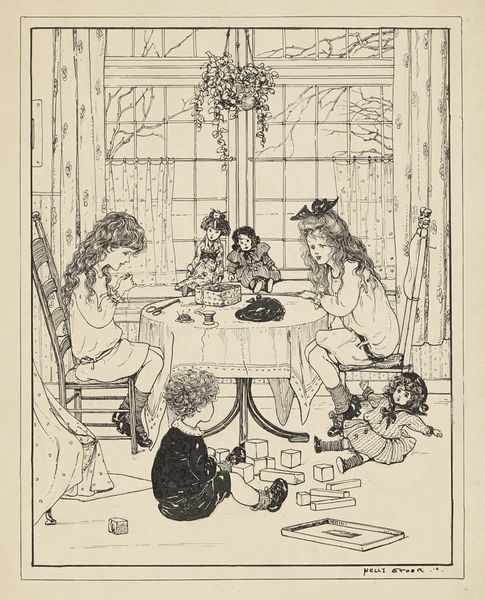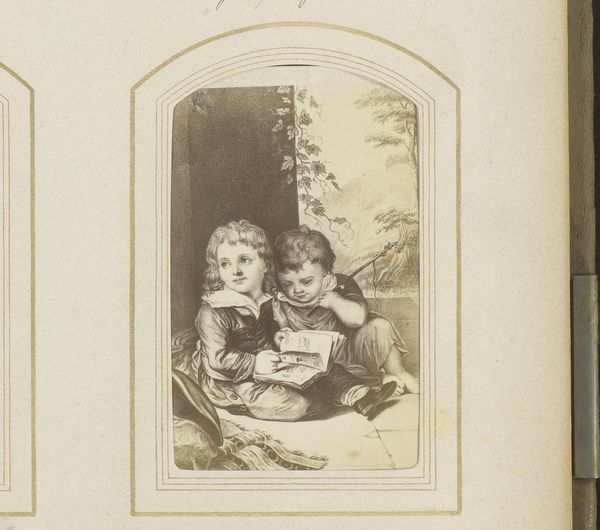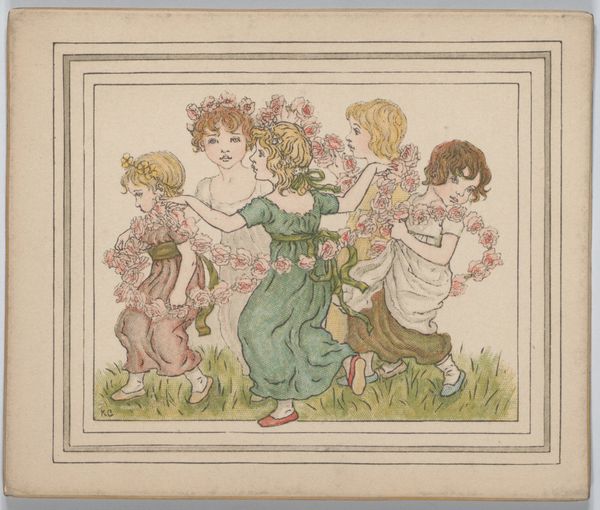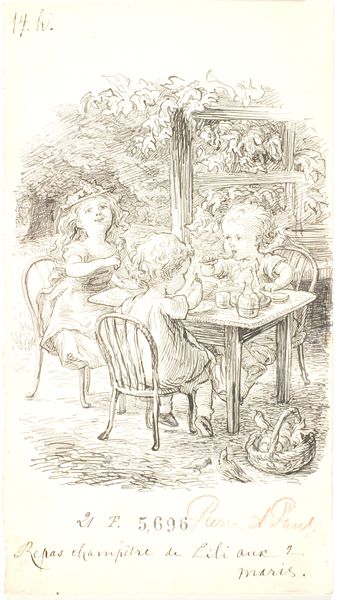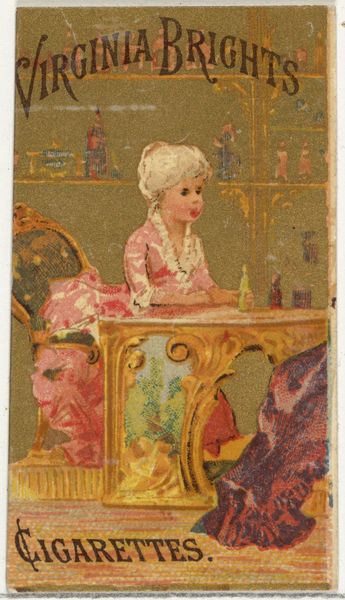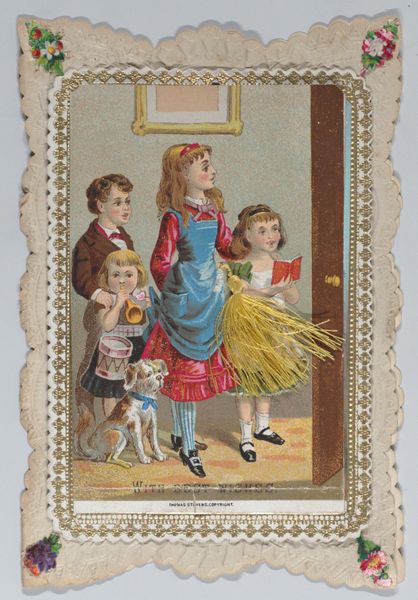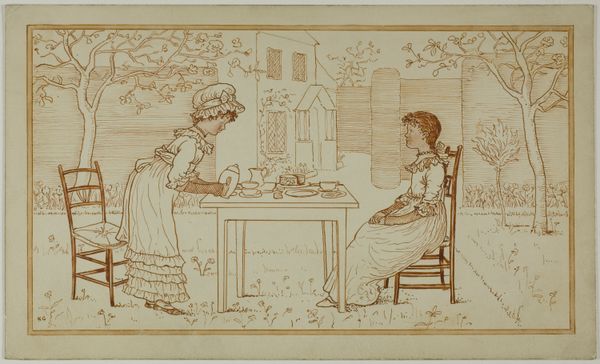
Dimensions: Width: 3 3/16 in. (8.1 cm) Length: 5 3/8 in. (13.7 cm)
Copyright: Public Domain
Curator: Looking at Kate Greenaway's "Valentine" from 1880, currently held at the Metropolitan Museum of Art in New York, I’m immediately struck by the feeling of innocence it evokes. The light color palette, the details—watercolor and print combined create a whimsical image of childhood. Editor: The texture of the print gives it a sense of materiality; you can almost feel the paper’s grain. The ducks especially highlight the materials used, creating depth and motion through the watercolour effects, blurring the lines between traditional printing and fine art practices. It seems such care was placed on each detail. Curator: Absolutely, Greenaway often portrayed children, imbuing her works with romanticism. This piece, ostensibly created as a greeting, feels like it engages the complicated social mores that dictated acceptable forms of love. The valentine imagery allows us to consider the ways in which love is often bound by structures. How do these young characters navigate through tradition? Editor: Yes, and if we delve into production techniques, consider what it meant to create affordable art prints at this scale. Were these individual pieces meant to be framed? Mass produced? What did its making mean to a late-nineteenth-century viewer—the commodification of art through the labor and tools used to make these greeting cards accessible to broader society? Curator: Considering the context, the card format hints at broader Victorian themes of affection, while the artist's work invites critique on idealization, the complex historical views on the role of children in the family and the value and labour placed on expressions of affection. How many women artists gained renown via more commercial routes? Editor: Looking closely at how Greenaway handled color, especially in rendering fabrics and her depiction of water, illuminates a delicate, iterative artistic approach, but at its heart the artwork, due to its materiality, democratizes artistic consumption. It is so striking how the artist manipulated the watercolors in this reproductive printing, even. Curator: Indeed. Examining it closely makes one reflect on what and whom we choose to cherish. It’s a powerful way of understanding that seemingly simple sentimental imagery are full of layered political narratives. Editor: Yes, understanding art practices such as those demonstrated by Greenaway allow us to comprehend not only individual works but also entire creative economic networks. I agree that such "simplistic imagery" provide critical historical insights into artistic networks and their ability to alter how we access culture today.
Comments
No comments
Be the first to comment and join the conversation on the ultimate creative platform.
